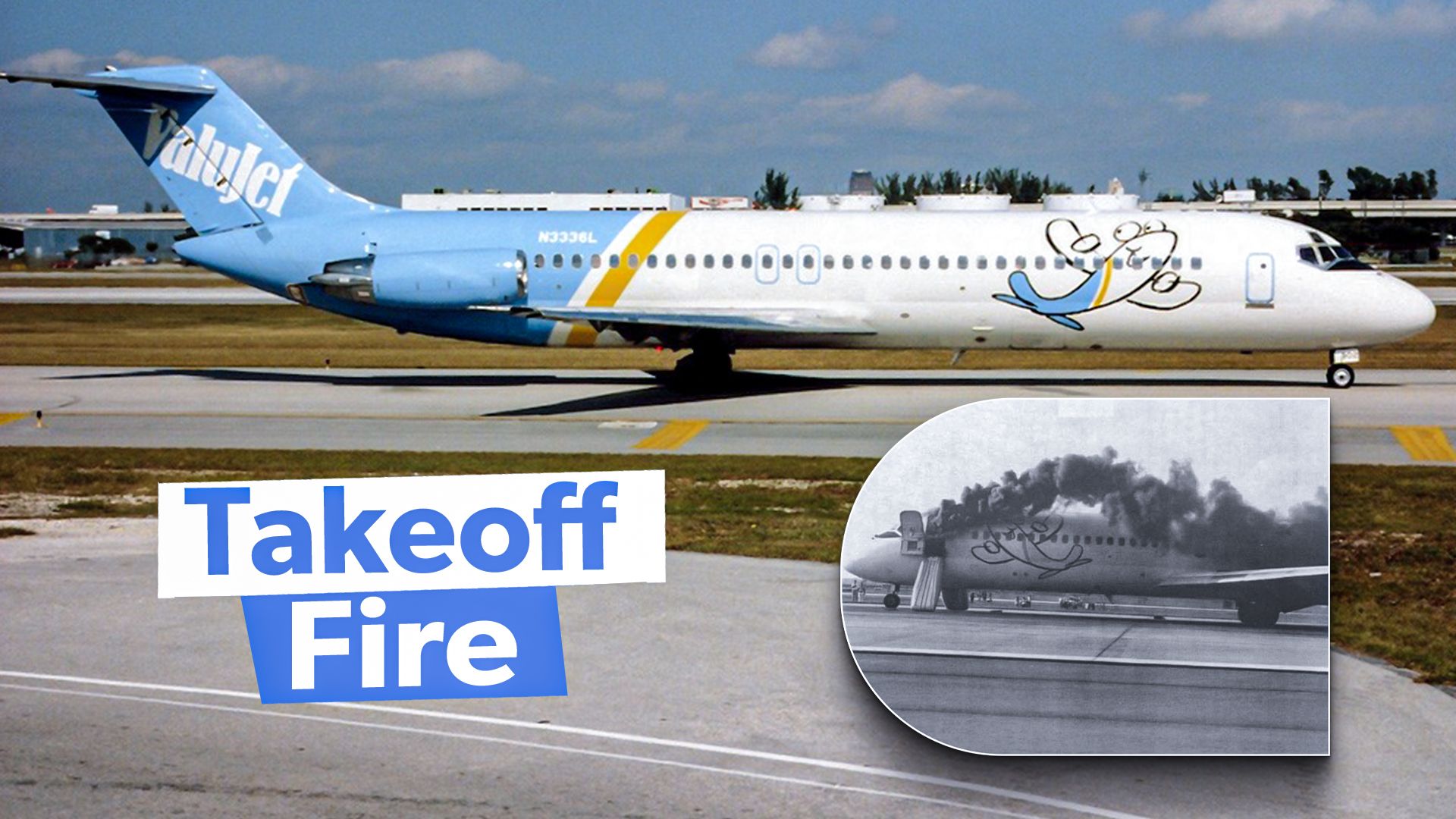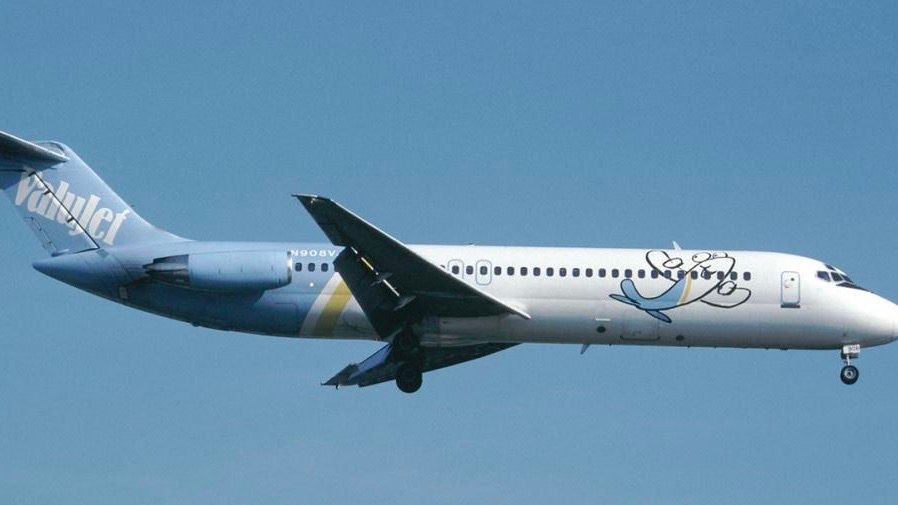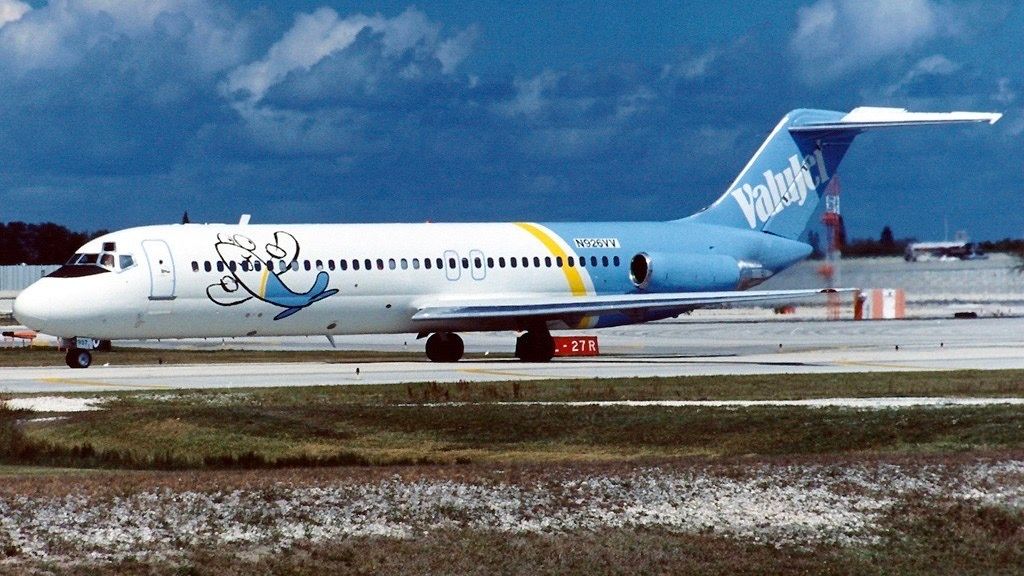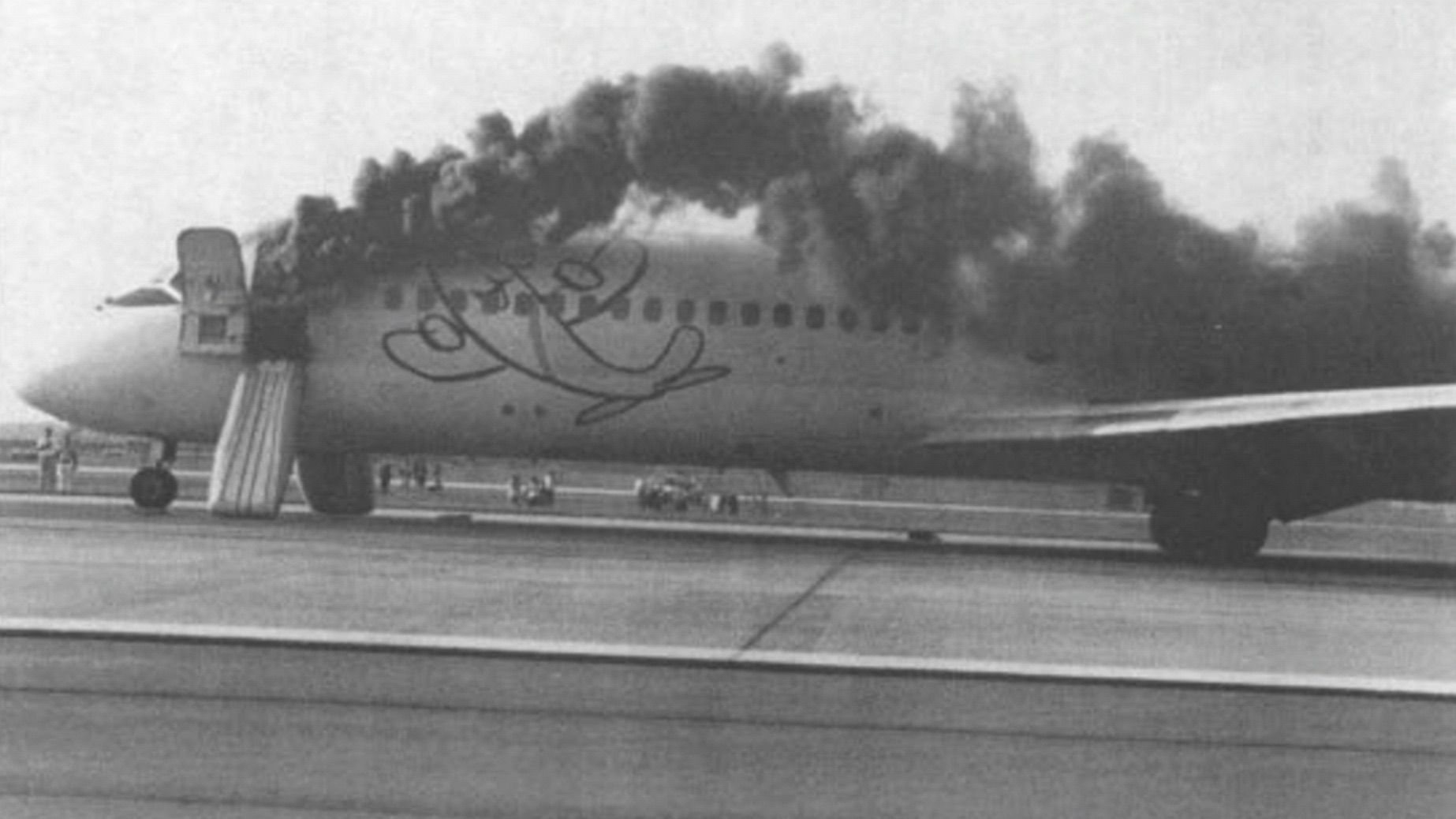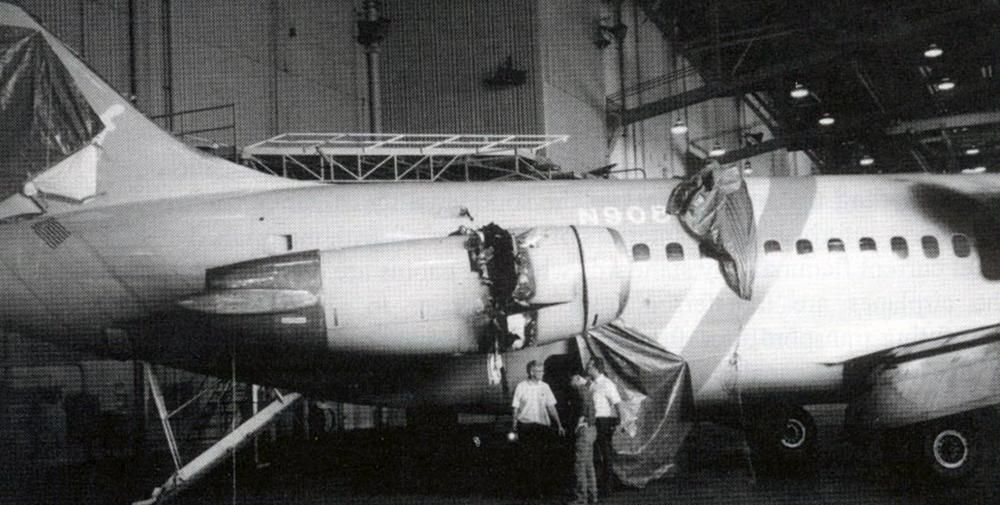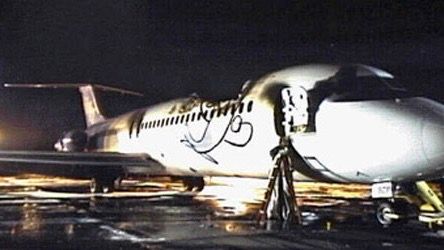Summary
- ValuJet Flight 597 crew remained jovial and professional before engine failure occurred during take-off.
- The crew reacted quickly, initiating a successful evacuation as fire engulfed the aircraft in just minutes.
- The cause of the accident was engine failure due to a detectable crack, highlighting maintenance and training deficiencies.
It was Thursday, June 8th, 1995. ValuJet Airlines Flight 597 was getting ready to leave from William B. Hartsfield Atlanta International Airport, Georgia just like any other day. The Douglas DC-9 was bound for Miami International Airport, Florida. There were 57 passengers onboard and five crew members onboard.
The crew
The captain was Greg Straessle, and his co-pilot was Steve Rasin. Working in the cabin were flight attendants, Megan, Denise and Rachel. Rachel had only been working for Valujet for 20 months and was previously an elementary school teacher. She loved her job at the airline. Denise had six-months of flying experience and Megan had been flying for other airlines over a ten-year period.
Prior to the event
The crew was relaxed and seemed to be jovial. The flight attendants boarded the passengers and helped them with their luggage. Megan made the announcements, and in one, she said that if the passengers seated at the overwings were not happy to open the exits in an emergency, please speak to Denise, and she would reseat you. They were waiting for catering and were running a little late at stand C25.
Once the catering was onboard, they set their doors to automatic and crosschecked them. They did the safety demonstration. Megan and Denise were seated at the forward jumpseats and Rachel was seated at the rear jumpseat at the back of the aircraft. At 18:55, the aircraft was cleared for take-off on runway 27R. It was dusk.
What happened next?
The aircraft began take-off roll at 19:08 and suddenly there was a loud bang heard by all on the aircraft and air traffic control. In the cockpit, the right engine fire warning light illuminated. The captain of the aircraft behind them radioed them saying the right engine was on fire. The flight crew rejected the take-off. Suddenly, shrapnel from the right engine penetrated the fuselage and main fuel line. The emergency floor lights flickered on and off ominously.
“We were just lifting upward when the fire happened. The pilot of the plane behind us saw it on the back of our plane and radioed. ‘You have a fire.” Our pilot put the nose of the plane back down. Had they taken off, it would have exploded.”
Rachel, flight attendant flight 597 as told to Daily Press.
Fire erupted in the cabin, and Rachel could see flames around her feet. Denise and Megan could see that Rachel was outlined in the back of the cabin by flames. Denise tried to open the cockpit door to inform the flight crew, but it was locked. She went to find the key in the galley, which was kept there following procedure. Passengers were starting to stand up, panicking and preparing to get out of the aircraft, although it was still moving.
Commotion in the cabin
Megan found her own key and told the flight crew what was happening in the cabin. The aircraft came to a halt, and the captain ordered an evacuation. There was commotion in the cabin as the fire and smoke grew heavier. Megan and Denise opened their exit doors at the front of the aircraft. Denise saw that the smoke in the cabin was from waist level up to the ceiling. It was thick, black, acrid smoke, and it was hard to see, even the person next to you.
The evacuation
The evacuation started through the forward doors, the slides were deployed and inflated, and passengers escaped the burning aircraft. All four overwing hatches were opened. In the cabin, luckily, it was only half occupied and expedited the evacuation. An infant onboard was passed from the mother to a male who took the infant to the overwing and passed them to another passenger who jumped off the wing’s trailing edge with the infant, safely.
Rachel struggled to undo her seat belt at first but could not open the tail cone exit because of the fire. She then managed to release it before making her way down the aisle to evacuate from the left overwing exit. The emergency response teams arrived minutes after the accident. The fire had sped rapidly through the cabin in just minutes.
“The next thing I remember is sitting on the runway looking down at my skin on my arms and legs and just seeing meat. It was terrifying. I have vague patches of memory waiting for the ambulance, but I remember looking at the plane and it was on fire. There was top to the plane.”
Rachel as told to Daily Press.
The aftermath
Before leaving the aircraft, the crew noticed that there was only three or four inches of the cabin floor. The cabin had become engulfed by flames within three minutes of the engine failure. The evacuation took just under a minute. The flight attendants and flight crew evacuated last. The fire was extinguished in ten minutes. The aircraft was destroyed.
Injuries to passengers and crew
Rachel received two severe puncture wounds from the shrapnel in her knee and had second-degree burns on her arms and legs, covering 30% of her body. The NTSB report suggested that her uniform of shorts and short-sleeved polo shirt was not suitable for a flight attendant and made her injuries worse. Rachel spent some time in hospital recovering from her injuries.
Rachel – major injuries
One flight attendant – a minor injury
Five passengers – minor injuries (cuts and bruises, hyperventilation and smoke inhalation)
One flight attendant – no injury
Two flight crew – no injury
52 passengers – not injured

Related
Emirates Flight 521: A Cabin Crew Perspective
An evacuation in reality.
The cause of the accident
The NTSB report said that the cause of the accident was engine failure caused by a detectable crack in a compressor disk, on which a maintenance contractor had failed to form a proper inspection and had kept poor records. The accident resulted in the NTSB issuing an advisory that recommended improvements to maintenance rules in the aviation industry.
There were issues with the flight attendant training, and there were errors in the flight attendant manual. The principal operations inspector for Valujet was told that the manuals should not have been approved before they were read. There were some deficiencies in training in that there was no hands on training on the tail cone exit. The FAA recommended that flight attendant uniforms should cover arms and legs to protect from possible fire and be made with natural fabrics.
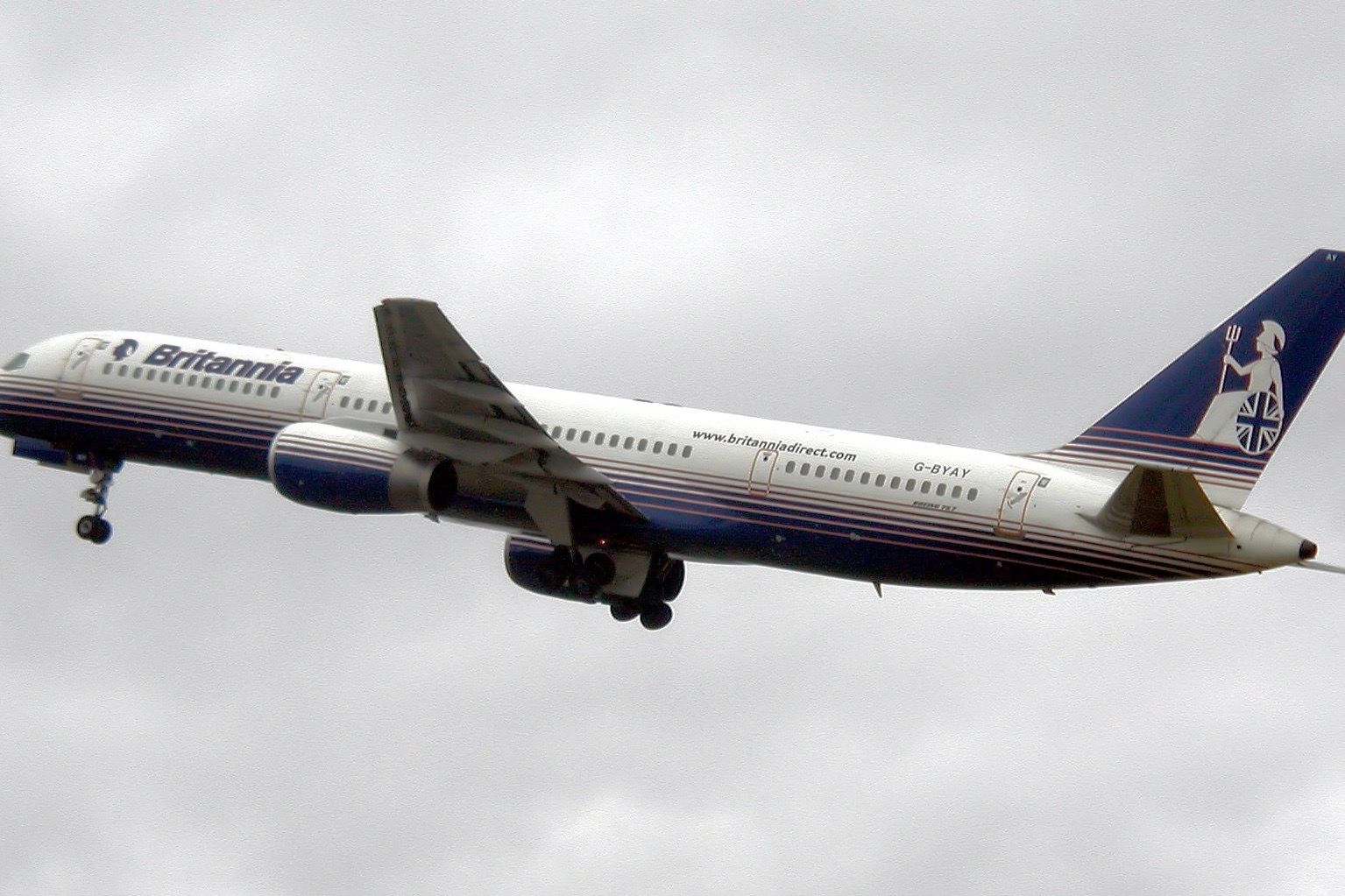
Related
Britannia Airways Flight 226a: A Cabin Crew Perspective
A terrifying landing but a true miracle.

